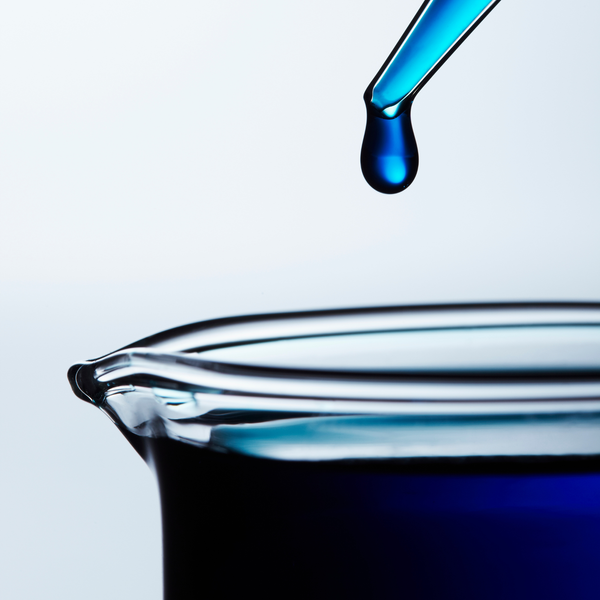Meet DMSO: The Hidden Treasure in Holistic Health Care

Introduction
In the vast world of holistic health solutions, Dimethyl sulfoxide (DMSO) stands out as a remarkable yet underappreciated substance. Originally discovered in the mid-19th century and gaining medical attention in the 1960s, DMSO has proven to be more than just a by-product of the wood pulp industry.
Historical Background and Discovery
DMSO's journey from an industrial solvent to a medical marvel began with its synthesis by Russian scientist Alexander Zaytsev, later rediscovered by Dr. Stanley Jacob, who noticed its ability to penetrate skin without damage, paving the way for therapeutic applications.
How DMSO Works: A Scientific Perspective
DMSO is distinguished by its ability to dissolve both polar and nonpolar compounds, enhancing its capability to deliver other medications through biological membranes. Its intrinsic properties include anti-inflammatory and analgesic effects, making it valuable in various medical scenarios.
Understanding Blood Flow and Its Importance
Efficient blood flow is crucial for delivering essential nutrients and oxygen, supporting overall health and tissue repair. DMSO enhances this process by improving circulation, which facilitates better oxygen and nutrient delivery and expedites healing.
How DMSO Enhances Blood Flow
DMSO acts by causing vasodilation, which widens blood vessels and enhances blood flow to areas of application. This increased circulation is crucial for reducing healing times and improving therapeutic outcomes in various medical conditions.
DMSO's Remarkable Role in Biological Systems
What makes DMSO special is its ability to mingle with water and penetrate tissues seamlessly. This interaction with water is key, as it can rearrange the structure of water molecules around cells. This ability affects how cells function and enhances the efficacy of treatments. DMSO essentially helps stabilize important cellular components like proteins, supporting their proper function and boosting the body’s natural healing processes.
Dr. Stanley Jacob's Research on DMSO
Dr. Jacob's extensive research highlights DMSO's potential in treating a range of conditions including:
- Neurological Disorders: Alzheimer's, stroke, and traumatic brain injuries.
- Autoimmune Diseases: Lupus, arthritis, and scleroderma.
- Cardiovascular Issues: Atherosclerosis.
- Skin and Tissue Repair: Chemical injuries and ischemia.
- Other Chronic Conditions: Fibromyalgia, herpes, and interstitial cystitis.
Current Uses in Veterinary and Human Medicine
In veterinary medicine, DMSO is widely used, particularly in the care of million-dollar racehorses, for its ability to reduce inflammation and promote rapid healing of joint and muscle injuries. In human medicine, it is FDA-approved for treating interstitial cystitis, a painful bladder condition, and as a cryoprotectant in organ transplants. DMSO helps preserve organs at low temperatures without the formation of damaging ice crystals, ensuring they remain viable for transplantation.
How to Use and Dose DMSO Safely
When considering using DMSO for its health benefits, it's crucial to understand how to apply it safely and effectively. Here’s a guide to help you navigate the usage and dosing of DMSO:
Understanding Concentrations and Formulations
DMSO is available in various concentrations, typically ranging from 70% to 99%. Lower concentrations are less irritating to the skin and are generally recommended for topical use. It's important to start with a lower concentration to gauge your skin's sensitivity before potentially moving to a higher concentration if needed. I recommend purchasing only the 99% concentration to ensure quality and purity, and then diluting it yourself with aloe vera juice or distilled water.
Application Methods
- Topical Application: DMSO can be applied directly to the skin over the area of pain or inflammation. It should be applied to clean skin with clean hands or a sterile cotton pad.
- With Carrier Agents: Sometimes, DMSO is mixed with other compounds to enhance its effectiveness. For instance, it can be combined with aloe vera or other soothing agents to minimize skin irritation.
- As a Solvent for Medications: In some medical settings, DMSO is used as a carrier for other medications to enhance their absorption and effectiveness. This should only be done under medical supervision.
Recommended Dosages
- General Guideline: For topical use, a good starting point is applying a 70% DMSO solution with a cotton ball, allowing it to air dry. This can be done up to three times a day, depending on the response and tolerance.
- Medical Dosages: For specific conditions like interstitial cystitis, DMSO is administered in a more controlled medical environment, often as part of a larger treatment regimen.
- DMSO can also be administered intravenously (IV) and orally. However, since I have only recently discovered it, I will refrain from providing dosages at this time
- Dilution: To dilute 99% DMSO for safe topical use, you can mix 7 parts DMSO with 3 parts distilled water or aloe vera juice. For example, to make a 70% DMSO solution, add 7 drops of 99% DMSO to 3 drops of water or aloe vera. Alternatively, for larger batches, mix 7 tablespoons of DMSO with 3 tablespoons of your chosen diluent.
Safety and Precautions
- Skin Reactions: Always perform a patch test on a small area of the skin before full application. Some individuals may experience redness, itching, or dry skin.
- Using Gloves: It's important to note that using latex or rubber gloves with DMSO is not advisable, as these materials can dissolve. Instead, use stretchy plastic gloves or a plastic bag to handle the cotton ball when applying DMSO. There's no evidence to suggest that DMSO pushes microplastics into the skin. However, be cautious with nail polish and other chemicals from manicures, as DMSO can absorb these substances and carry them into the skin.
- Avoid Contact with Clothing: DMSO can carry compounds from fabrics into the skin, so direct contact with clothing or other materials should be avoided immediately after application.
Monitoring and Adjustments
- Response to Treatment: Monitor the effects of DMSO and adjust usage as necessary. If irritation occurs, reduce the concentration or frequency of application.
- Consult Healthcare Providers: Before starting any new treatment, including DMSO, consult with a healthcare provider, especially if you have underlying health conditions or are taking other medications.
If you're planning to use DMSO as part of your health regimen, it's important to ensure you have the right supplies for safe and effective application. Below are some affiliate links to high-quality products that I recommend:
- DMSO: Start with a 99% concentration to guarantee purity and quality. This can be diluted to your preferred concentration for use. Buy 99% Pure DMSO
- Glass Bottles with Droppers: For diluting and applying DMSO, glass bottles with droppers are essential. They ensure precise measurements and safe storage, preventing any unwanted chemical reactions that can occur with plastic containers. Buy Glass Bottles with Droppers Buy Glass Spray Bottles
- Clean Soaps: Before applying DMSO, it's crucial to cleanse the area with a gentle, clean soap to remove any impurities that could be driven into the skin by DMSO. Also chemical and perfumes will be driven in as well so make it as clean as you can find. Buy Clean Soaps
- Aloe Vera Gel or Spray: For those who need to dilute DMSO, aloe vera juice is an excellent choice. It not only helps in dilution but also soothes the skin, reducing the potential for irritation. Buy Aloe Vera Gel, Buy Aloe Vera Spray
- Countertop Water Distiller: To ensure the water used for dilution is as pure as possible, consider using a countertop water distiller. This device can provide you with clean, distilled water that is ideal for mixing with DMSO or any other uses that require the highest purity. Buy Countertop Water Distiller I have this one and have been using it every day for over a year. It's still working great!
Using these products together ensures that your DMSO application is as effective and safe as possible. Click on the links to purchase and start incorporating DMSO into your health care routine responsibly.
Conclusion
DMSO remains a powerful yet underutilized resource in holistic medicine. Its comprehensive range of applications, combined with a solid safety profile and official FDA approval for specific uses, underscores its potential as a therapeutic agent. DMSO also shows potential in skincare, particularly in enhancing the delivery of active ingredients like retinoids and collagen deep into the skin, suggesting exciting future applications in facial care products. As we continue to discover and leverage its benefits, DMSO is set to transform many aspects of health care
In health,
Jamie Shahan MSN, CRNA, RN
Empowering Holistic Health
🌐 Connect with me on Social Media:
This article contains affiliate links and I may make a little cash along the way. I'd be stupid not to add them! If I am educating you about making changes then I may as well recommend items for you to try. These suggestions will get you looking in the right direction.
Disclaimer
I am a healthcare practitioner. I am not a doctor, nor am I your healthcare practitioner. The information shared in this blog is for educational and informational purposes only and is not intended as medical advice, diagnosis, or treatment.
I explore and share research, holistic approaches, and personal experiences in my journey to healing. It is up to you to make informed decisions about your health. Always do your own research, listen to your body, and consult a trusted healthcare professional if needed before trying any new health protocol, supplement, or treatment.
By reading this blog, you acknowledge that you are responsible for your own health choices and that I am not liable for any outcomes resulting from the application of the information provided.



